
Eve Online | Cosmos Amarr Material Farming
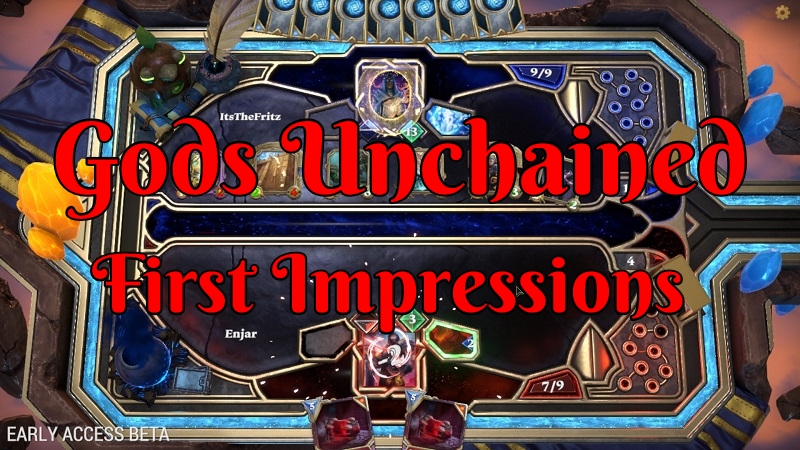
Gods Unchained is a digital collective card game (dccg) that uses the Ethereum blockchain for trading and keeping track of cards. You can play f2p with an option to buy packs as well. Currently, the game is in early access so I’m choosing to go with a first impression. Once the game is fully released and I’ve put a considerable more amount of time I may consider doing a full review if there is enough interest for it.

One of the things I like the developer has done is to work out what exactly they want to be using a blockchain for in the first place. For them, it is just the transaction of cards, storage of cards, and trading according to their FAQ.
They have also solved the issue of how do you handle players being able to play for free when assets are typically transferable in blockchain style of games. The solution was quite simply not all cards are tradeable. That way they can start people off with some cards and even reward players with more. Without having to worry about abuse from sock puppet accounts just trying to get free cards and crashing the market. The bought cards will be trade.
I still am wondering how they plan on dealing with botting if anything. Because they are going in the more transitional method of game development and not having everything on the blockchain. I’m hoping a more classic solution can be deployed if they even wish to combat botting. This is sadly a massive issue in blockchain games these days at least in my eyes. I prefer to play games not bot them and they should be fun for a human to play as this one appears to be fun.
As more and more games start using blockchains to help add a layer of transparency of ownership as well as security for digital assets. I think it’s a smart move to work exactly how much interaction you need just in case things start to get bogged down. Not to mention over time blockchain have hiccups and delays that are noticeable by gamers and depending on transaction speed that could be a real game killer if you are always waiting around to do very basic things. I think they found the right balance without opening up the players to possible risk people discovering their card draw order from the blockchain itself or other forms of information gathering outside of what cards a player owns.

Most dccg players are more familiar with deck colors. In that sense, you can get somewhat of a feel for the playstyle the game developer has found a way to make gameplay unique and a little different so that is only a helping hand to work out where you might want to start with. For instance, the God of War is red and has some heavy tanking. Meanwhile, God of light is white and has a fair amount of healing in those cards.

What sets Gods Unchained apart in this genre is that you get to use a god power each turn in the game if you can afford the mana costs. At the start of each game before you even get see what cards you drew you need to choose from several options for that god or goddess what god skill you want for the remaining match. They come in different mana costs and usefulness depending on your situation.
I found sometimes while playing Auras the God of War that I heavily favored having Intense Training to get the +1/+2 on a random creature card in my hand. This, however, was quite worthless when I was not holding any. Meanwhile, something like Slayer required a relic and Enrage caused damage per turn on the creature it’s casted on. This made me feel more times than not since you can only have one. That Intense Training was more rounded selection to pick. I also noticed that for other classes everyone, for the most part, seemed to heavily be in favor of one god power over the others. Since this is an early access game and the developer are still toying with stuff I hope to see this part of the meta changeup over the long run.
Overall this part of the game was a pleasant surprise. I like to see creative and deeper systems like this put in place. It makes picking one style of the deck over another even more special with the player further making it to their playstyle. Hopefully, with some rebalancing in the future, this will become a far more diverse part of the game when facing other players.
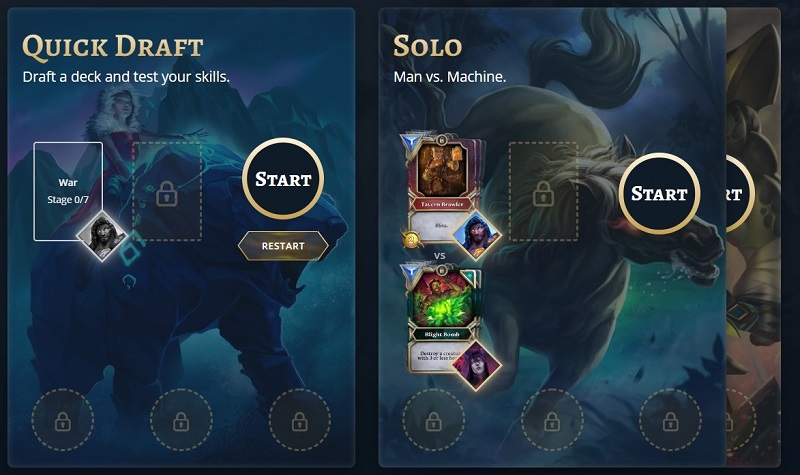
For now, there are only a couple of game modes but it is still in early access. They seem to follow a very standard lineup and I think that is a good thing as it creates familiarity for players coming from other games. You have a quick draft, constructed, and solo mode. They also do have plans to have a tournament with the first one being quite a large prize pool.
The Constructed mode is player vs player mode in this game. As far as I’ve made it it’s not quite that deep as of yet. I did, for the most part, feel like I was playing against other newer players as I noticed both sides were making mistakes. It was also rather rare for me to come across someone that just stomp me into the ground. Matches at even odd hours of the day tended to take me around twenty seconds to a minute to find a match. Outside of players getting disconnected sometimes mostly when they were losing resulting in me not gaining any experience for leveling up. I was rather happy with the matchmaking system so far.
Next, you have the solo vs the AI. I found this more challenging than some of the players I faced. You also get to select what deck the AI is playing. Which I think helps a player to better understand how their deck faces against the different gods.

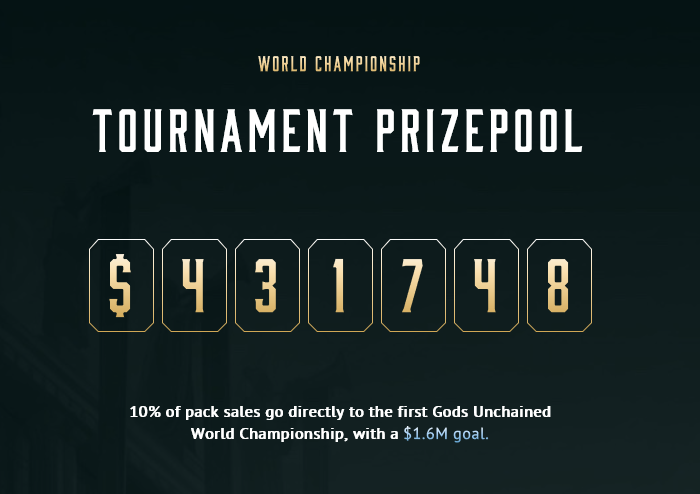
With this game being in early access I feel having the first three modes of gameplay is more than enough. Over time players might thirst for more options that change up gameplay such as different rule sets or even daily tournaments and challenges.
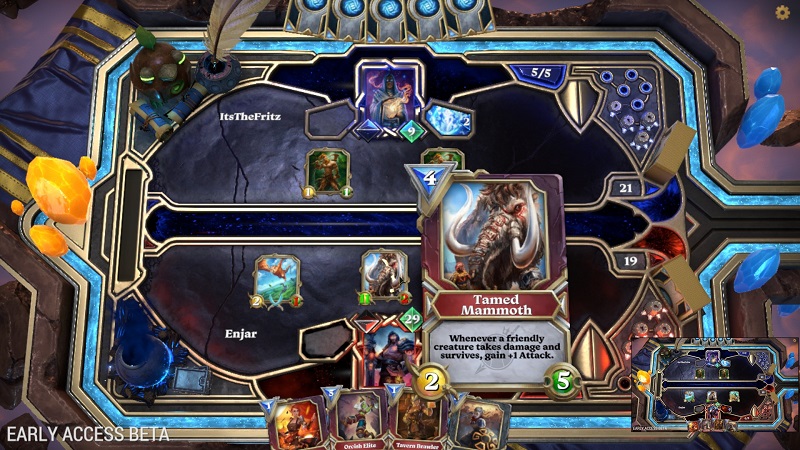
As stated before Gods Unchained does use a mana cost system for summoning cards onto the board. If you have played games like Gwent, Hearthstone, Magic The Gathering and others many of the ability seen will feel familiar as well. There where however a couple of card ability that was different and quite funny when trying to attack with nothing happening.
After you pick your god power to use you are shown your hand of cards. You have one opportunity to discord what ones you don’t want to have replaced. While I feel once might not be enough for the starting decks it was quite common for me to have mana cost one, two, and threes for my first couple of turns. In the future when I make my own deck I’ll have to keep in mind the limited ability when it comes to the RNG of the draw.
Like many games, they tried to solve the issue first player advantage. They also gave some early game help against bad RNG as well by giving both players an item to gain at least one mana once. The second player gets to keep drawing that card a number of times over. It seemed quite overpowered getting to be the second player if you could use early game all the extra mana you got to lay down pressure on player one. While I did not keep track I got the mana again, and again, and again. This gave me quite the advantage when I had the cards to place down.

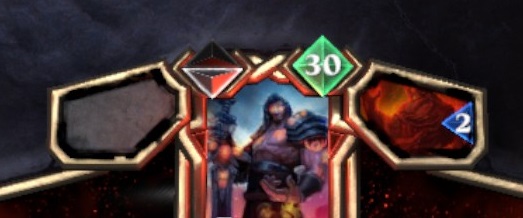
Each round you get to draw another card draw. There are cards in the deck that let you draw even more cards but each player is capped at bringing thirty with up to two of each type depending on the rarity of the card itself. Since the system is mana based and not land based you did not have to worry about getting another land. There are however a number of items in game for damage dealing, protecting, and doing other stuff. So you might not always draw a creature card.
I did find at least for my deck, card placement to be rather important. I had cards that buffed other cards either that were already placed or once in the deck. As such card order becomes important. Meanwhile, other ability like being able to strike on the first turn, or double striking but the second attack could only be used on a creature. That last one sure got me a couple of times as I’m not used to having that kind of limitation.
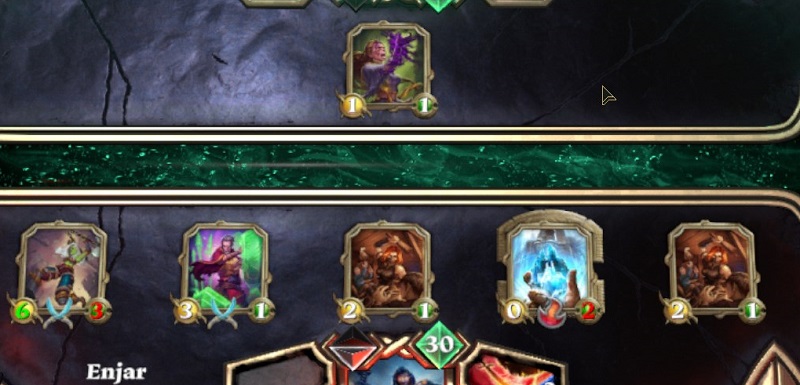
I had a lot of fun duking it out in pvp with other players. Many times we go blow for blow wiping each other off the board. I would get down a card, they get down a card and we take each other’s creatures out. Over time the tide of war would change from the abilities being used and the luck of the draw. Someone would manage to gain full control and be able to lay down some damage to the face removing health.

Screenshots were taken and content was written by @Enjar about the game Gods Unchained. The game is in early access at the time of writing this.
Feel free to use my beta invite key (referral link)

